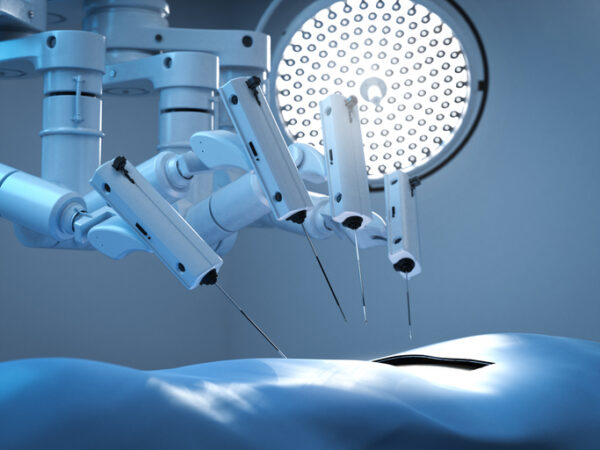
As the healthcare industry strives to deliver more personalized care, improve outcomes, and streamline workflows, innovative technology is vital. This has given rise to a proliferation of digital devices, from wearable health monitors to surgical robotics. These solutions are helping the digital healthcare market reach $772.46 billion by 2029, with the global robotic surgery market projected to grow more than 16% annually. This is fueled in part by the rapid adoption of wireless technology and AI-powered medical applications.
Wearables are not the only aspect of healthcare innovation; the operating room (OR) is digitally transforming. Long gone are the days of relying only on a sterile space. Today, the digital OR combines data, imaging, and communication tools, helping to improve surgical workflows and patient safety. Information is transferred in real time between devices, clinicians, and hospital systems. These dynamic environments now feature a dense array of interconnected devices – robotics that enable more precise surgery, as well as increasingly smaller and more portable CT scans to enhance image quality and diagnostics, and endoscopes with ultra-high-definition images, for example. Underpinning the modern OR is 4K data access and connectivity to support AI-powered image-guided care.
As operating environments become more complex, every element and system must be reliable, safe, and compliant with the web of regulations. Testing is the antidote to address these issues. However, this presents a significant testing burden for the industry with key challenges including:

Solera Health’s Playbook To Beat Rising Employer Expenses
Solera Health is working to streamline employer contracting with health tech.
1. Wireless connectivity and coexistence – The OR now has a multitude of wireless devices, from robots to monitors and imaging systems, in a confined space, operating on different protocols and frequencies and competing for limited spectrum. The FDA has issued guidance and specific standards, including ANSI C63.27, AAMI TIR 69, IEC 60601-1-2, and IEC 61326, to ensure these devices can operate safely and reliably. As interference has the potential to impact surgical procedures and outcomes, coexistence testing is essential. This involves evaluating the radio protocols, the environment in which the device will operate, and the techniques to improve coexistence. To address this, advanced wireless test solutions for dense device environments are necessary.
2. Cybersecurity – With healthcare providers firmly in cybercriminals’ crosshairs, medical devices are a growing threat vector. Every technology in the OR is another node on the network, subject to the same risks of ransomware, data breaches, and unauthorized access.To safeguard patient data the FDA requires that medical devices undergo robust testing to ensure vulnerabilities are identified and mitigated before deployment. Integrating a cybersecurity test solution in the development process can help achieve compliance faster.
3. High-speed data and imaging – High-resolution images, that aid diagnostic capabilities, are a key part of the digital OR. To support the data demands of AI and integration with electronic health records, a high-speed, low-latency network is essential. Network testing needs to encompass throughput, signal integrity, latency, and reliability under peak loads. And as imaging systems become more portable, they must maintain their performance in various settings, such as mobile stroke units or remote care clinics.
4. Regulatory compliance – As innovation accelerates, along with the regulatory burden, device manufacturers must balance time to market with meeting the stringent standards. This has put test automation in the driver’s seat, with hardware-in-the-loop validation being deployed to test hardware components interacting with a simulated environment. This speeds product development and expands test coverage and repeatability, which are critical for regulatory approval.
The operating room of tomorrow
Advanced simulation technologies like digital twins are increasingly being adopted to address the challenges outlined. The software provides a way to model and test digital OR complexities in every scenario. As the operating environment evolves, it will consist of a complex web of intelligent systems that maximize efficiency, safety, and surgical outcomes. AI, IoT, visualization, remote technologies, and more portable diagnostic tools will be commonplace, along with the push to miniaturize devices. As a result of the complexity involved, testing will remain a strategic imperative to realize these goals.
The digital OR has the ability to transform care and usher in a new era of personalized healthcare. Before this can happen, comprehensive testing and validation are necessary to ensure that every medical device, network, and system performs together reliably. As more devices and systems are integrated, standards will continue to evolve, and in turn, testing methodologies will need to advance to support the dynamic ecosystem.
Photo: PhonlamaiPhoto, Getty Images
Marie Hattar has more than 20 years of leadership experience spanning the security, routing, switching, telecom, and mobility markets. Before joining Keysight Technologies, Marie served as CMO at Ixia and Check Point Software Technologies. Before that, she served as Vice President at Cisco, where she led the company’s enterprise networking and security portfolio and helped drive its leadership in networking. Marie also worked at Nortel Networks, Alteon WebSystems, and Shasta Networks in senior marketing and CTO positions. Marie holds an MBA from York University and a Bachelor of Engineering degree in Electrical Engineering from the University of Toronto.
This post appears through the MedCity Influencers program. Anyone can publish their perspective on business and innovation in healthcare on MedCity News through MedCity Influencers. Click here to find out how.









